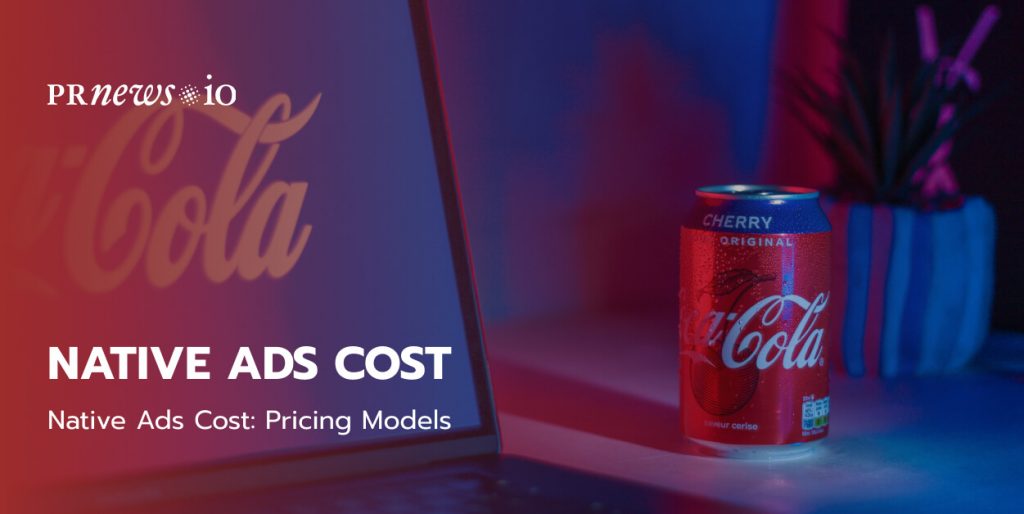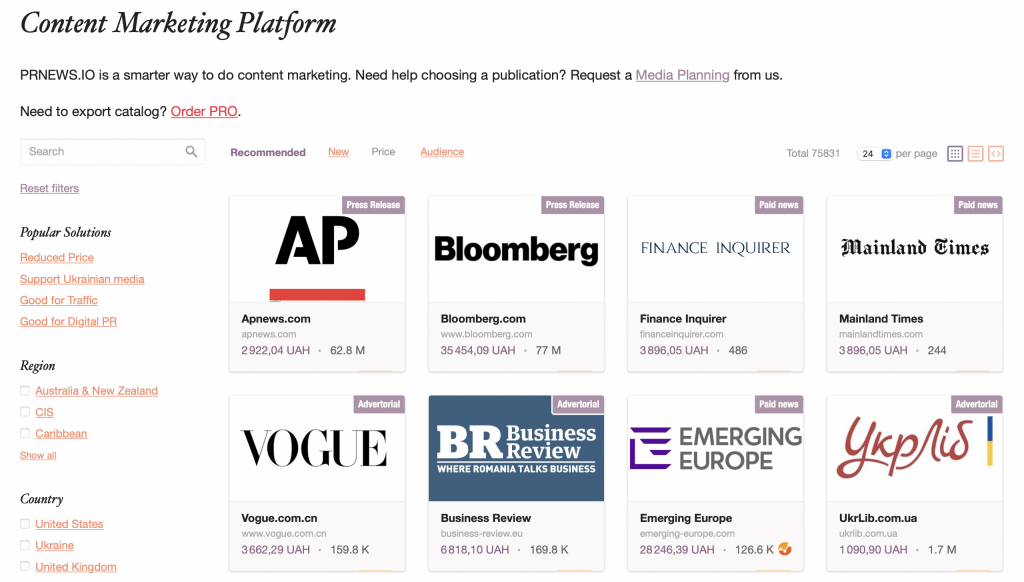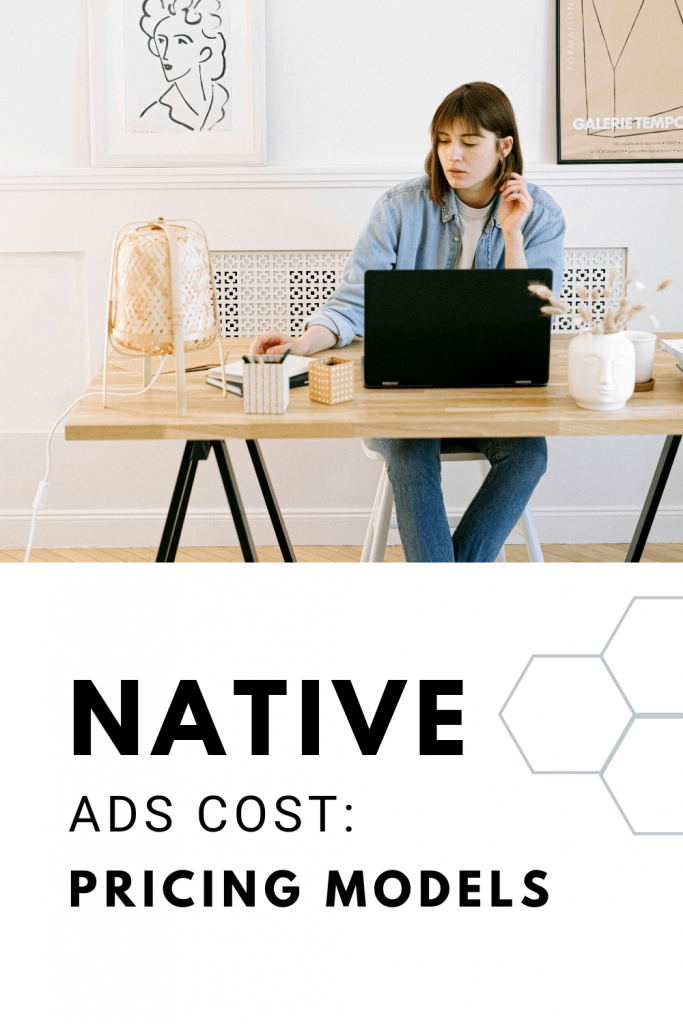
Today consumers become more resistant to standard forms of advertising, including display ads and banner ads. That´s why large and small businesses are distributing bigger budgets and spending more on content marketing and non-disruptive ad formats, like native ads. Native advertising fit “natively” and seamlessly on the web pages. The only thing you have to be attentive to is the native ads cost because their formation is not clear enough.
How the native ads costs are forming? How to avoid overpaying and buy this type of ad reasonably? In this article, we´ll talk about the methods to calculate native ads cost and what you should do to spend your PR budget wisely.
Pricing Models for Native Advertising
Native advertising is a type of paid advertising in which the ads corresponds well with the look, feel, and function of the media format where they appear. Many marketers prefer native advertising over traditional social ads specifically because they don’t abruptly take readers away from the content they are already enjoying.
Before you launch a new native advertising campaign, ideally, you would like to know how much you have to pay to run it. You might be surprised, but there is no standard pricing model today. We can identify three ways of forming the price for native ads, but every formula includes the opportunity to camouflage some additional costs that we´ll explain to you later.
Native ads = creation + distribution
One of the pricing models for native advertising content is based on a mix of creation and distribution. Thus a simple way to make out native ads’ costs is to think of them as a sum of two services creation and distribution.
Many publishers are involved in the creation of native ad content. They are either charging a separate production cost or putting it into the media spend, i.e. distribution.
Scalable pricing models
The second model is the display ads pricing model when your payment depends on the results of the ad performance (for instance, views, impressions, engagement rate).
You could choose the cost-per-view (CPV) model, the cost-per-thousand impressions model (CPM), or the cost-per-day model (CPD). With the CPM model, the advertiser is charged a CPM based on the promotional impressions received.
Over time, you can start increasing your CPV, CPM, or CPD expenses. Find what is right for you and your publication, and let data be your guide. Also, you can choose a pricing model on cost-per-engagement (CPE), measured as page views to the native ad content.
The last one is tricky because page views depend heavily on the quality of the website, headline, and/or thumbnail that appears in the promotional units used to drive traffic to the native ad content.
Time-based model
The final pricing model is the time-based model. With the time-based model, advertisers’ payments are based on how long their ads are staying published on the website.
Among all pricing models, the time-based model is the hardest to scale.
Content Marketing Platform
- 100,000+ media publications;
- get backlinks to your product;
- scale work with content distribution.
Are native ads overpriced?
Yes, they are. Why? Because many media outlets are charging with a time-based sponsorship model and have a limited catalog, which leads to a high CPM.
As native ads appear as part of the marketing combination of display ads, social, search, and video, and appear in RFPs (a request for proposals) regularly, marketers will demand that pricing moves away from sponsorships to scalable volume-based models.
Alternatives for a native advertisement distribution
The main problem with the native advertising cost – there is no steady pricing model. It depends on the quality and appetite of the media, each media has its own price. In addition, every PR manager or agency includes their indeterminate fee.
The results of the native ads are becoming pure chance: for $1000 you can get great results from native advertising (traffic, sales, conversions) or get nothing.
We are here to tell you about the alternative way to deal with native ads distribution – PRNEWS.io. Our service solves all the above-listed issues:
- there is no need to hire a PR manager who can order the media publications for your brand;
- the prices are fixed. The cost is clear – you can choose the appropriate online media for your content from the PRNEWS.io catalog ;
- guaranteed results (you can see the site traffic where you plan to buy placement).
Wrapping Up
Native advertising is the future of marketing, but native ads cost is unpredictable – today you can be charged with one price, tomorrow with another. We´ve found you a great opportunity to optimize this budget line, go ahead and welcome to PRNEWS.io

Native Ads Cost FAQ
How much does native advertising cost?
Generally, a native advertising campaign costs media outlets between $100 to $1,000,000. The cost is defined by several factors: publishers’ catalog, their domain authority, target audience, and the level of competition for traffic in the proper target geo.
What is native advertising?
Native advertising is a kind of paid advertising in which the ads fit the look, feel, and function of the media format where they appear. They are integrated “natively” and seamlessly into the content on the web page. Unlike banner or display ads, native ads don’t really look like ads, so they don’t distract the user’s attention and don’t stop their interaction with the page.
Why is native advertising an effective digital advertising technique?
Native ads have several important benefits over traditional display advertising: Native advertising is more engaging. The more well-reasoned and relevant a native ad is to the platform’s readers, the more engaging it becomes. Video native ads are the most engaging format, and can far surpass other ad types in performance and ROI. Native display ads have a higher conversion rate. Native ads do more than just engage the audience and increase your brand presence–they also convert prospects. It occurs because such ads attract a more interested audience. Native ads increase trust. The audience has become obviously more skeptical of advertising after so much exposure online, but native ads can actually build trust.
Read more:
- What Is Native Advertising & Why Does It Matter for Your Brand
- Advertorial vs. Editorial vs. Sponsored Content: the Key Points of the Difference
- What is Sponsored Content? Everything You Need To Know
Save to Pinterest
You can save this blog post about native ads costs to your Pinterest board for later.






